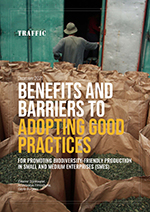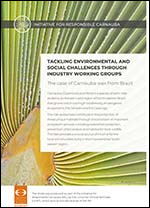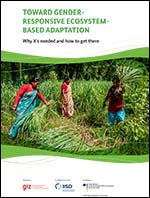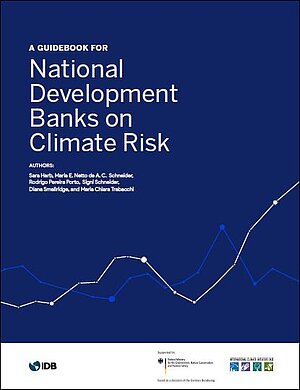IKI Media

Here you will find all media files of the IKI as well as from the IKI projects. You can filter by media format, topic or country. You can also use the search icon to look for all IKI media.
Improve and filter search
- Brazil (39)
- India (20)
- Indonesia (17)
- Mexico (16)
- South Africa (14)
- Peru (13)
- Colombia (11)
- Thailand (9)
- Viet Nam (9)
- Kazakhstan (8)
- Kyrgyzstan (8)
- Philippines (8)
- Ecuador (8)
- Grenada (8)
- Mali (7)
- Tajikistan (7)
- Tanzania (5)
- worldwide (3)
- Ethiopia (3)
- Kenya (2)
- United Kingdom (2)
- Germany (2)
- Argentina (2)
- Guatemala (2)
- Italy (1)
- Jamaica (1)
- Japan (1)
- Republic of Korea (South Korea) (1)
- Australia (1)
- Austria (1)
- Azerbaijan (1)
- Morocco (1)
- Nepal (1)
- Pakistan (1)
- Paraguay (1)
- Russian Federation (1)
- Rwanda (1)
- Saudi Arabia (1)
- Sudan (1)
- Sweden (1)
- Turkey (1)
- Uganda (1)
- United States (1)
- Vanuatu (1)
- South Sudan (1)
- Burundi (1)
- Canada (1)
- Chile (1)
- China (1)
- The Democratic Republic of Congo (1)
- Europe, Caucasus, Central Asia supraregional (1)
- Costa Rica (1)
- Cuba (1)
- Dominican Republic (1)
- Egypt (1)
- El Salvador (1)
- Anguilla (1)
- France (1)
- Gibraltar (1)
- Honduras (1)
Search narrowed by
-
![[Translate to English:] Cover Five Key Messages on How to Implement Agroecology as a Systemic Adaptation Response](data:image/gif;base64,R0lGODlhAQABAAAAACH5BAEKAAEALAAAAAABAAEAAAICTAEAOw==) Publication | 11/2022
Publication | 11/2022Five Key Messages on How to Implement Agroecology as a Systemic Adaptation Response
This paper outlines key messages on agroecology and food security, climate adaptation, biodiversity, as well as sustainable land and water management.
 Publication | 11/2022
Publication | 11/2022Climate Justice in Ecosystem-based Adaptation (EbA): a new publications collection
A new collection of publications on climate justice in ecosystem-based adaptation EbA, outcome of stakeholder consultation with IPLC, CSO and NGOs
English (PDF, 203 KB)
 Publication | 05/2022
Publication | 05/2022Solutions in Focus – Key Themes for Ecosystem-based Adaptation
This publication aims to inspire EbA policy- and decision-makers as well as practitioners by showcasing EbA solutions from the PANORAMA platform.
English (PDF, 9 MB)
 Publication | 12/2021
Publication | 12/2021Benefits and Barriers to adopting good practices - For promoting biodiversity-friendly production in small and medium enterprises (SMEs)
The vital role of the private sector in promoting biodiversity-friendly practices has been recognised and explored by the ‘Private Business Action for Biodiversity’ (PBAB) project. The project has tested different mechanisms for improving biodiversity protection across supply chains involving small and medium enterprises (SMEs) in India (spices), in Brazil (acai berries, carnauba wax), and in Mexico (agave). TRAFFIC has been analysed impacts and lessons learned of selected instruments for promoting biodiversity-friendly production in SMEs from the experiences of the PBAB project.
English (external link)
 Publication | 12/2021
Publication | 12/2021Private Business Action for Biodiversity - Findings from a project on biodiversity-friendly production and commercialization
The global Private Business Action for Biodiversity (PBAB) project has been pilot testing and further developing instruments for the promotion of biodiversity-friendly production and commercialization, with specific activities in three partner countries – Brazil, India and Mexico. This document summarizes the most relevant findings from concrete implementation of activities both on global and national level.
English (external link)
 Publication | 08/2021
Publication | 08/2021The case of Carnauba wax from Brazil
Carnauba (Copernicia prunifera) is a species of palm tree endemic to the semi-arid region of North-eastern Brazil, that grows wild in two high-biodiversity, endangered ecosystems: the Cerrado and the Caatinga. The Carnauba trees contribute to the protection of these unique habitats through the provision of important ecosystem services, including watershed protection, prevention of soil erosion and habitat for local wildlife. The tree provides a crucial source of income for the local communities living in the impoverished North-eastern region.
English (external link)
The target of the case study is to motivate organizations to join the Initiative Responsible Carnauba (IRC). The case study summaries challenges and opportunities in the sector (in terms of biodiversity and socio-economic aspects). Moreover, the case study shows companies how IRC can help them seize the opportunities by joining forces with other committed companies.
 Publication | 08/2021
Publication | 08/2021Toward Gender-Responsive Ecosystem-Based Adaptation - Why it’s needed and how to get there
The purpose of this report is twofold: to illustrate the importance of integrating gender considerations in EbA actions and to provide concrete examples of how this can be done in practice. The publication begins with a description of the rationale for integrating gender considerations in EbA action. It then outlines what gender-responsive EbA looks like in practice, introducing a set of broadly applicable building blocks, followed by case examples. Finally, recommendations are provided to improve the practice of gender-responsive EbA.
English (external link)
![[Translate to English:]](data:image/gif;base64,R0lGODlhAQABAAAAACH5BAEKAAEALAAAAAABAAEAAAICTAEAOw==) Publication | 08/2021
Publication | 08/2021Belo Horizonte's Green-Blue Network: A mapping methodology to prioritize nature-based solutions
Urbanization is an aggressive driver of change affecting the natural environment. The restoration of natural areas is, therefore, critically important for local governments. Nature-based solutions provide a foundation for reintegrating natural cycles into urban planning, improving ecosystem service provision and locals’ well-being. The mapping methodology in the case study consolidates the use of strategic elements from the Green-Blue Network in the Metropolitan Region of Belo Horizonte (RMBH).
English (external link)
![[Translate to English:]](data:image/gif;base64,R0lGODlhAQABAAAAACH5BAEKAAEALAAAAAABAAEAAAICTAEAOw==) Publication | 08/2021
Publication | 08/2021Mapping the Campinas Connectivity Area
Brazil is the most biodiverse country in the world. Its economic, social and cultural prosperity is likewise tied intrinsically to its ecosystems and their services.This case study showcases how integrating ecosystem services into regional planning in the Metropolitan Region of Campinas strengthened cooperation and enabled the implementation of the Campinas Connectivity Area, a series of ecological corridors bridging environmentally relevant areas throughout the State of São Paolo.
English (external link)
 Publication | 07/2021
Publication | 07/2021A guidebook for National Development Banks on Climate Risk
Climate-related financial risk management is a fast evolving topic. This guidebook intends to serve as a reference document on the resources available to date (2021), with a view to helping national development banks (NDBs) rapidly adopting good emerging practice while prompting them to fill outstanding gaps. NDBs are encouraged to engage with their stakeholders, local financial and capital market actors, and to collaborate regionally and globally in order to improve climate-related risk assessments and management. The guidebook refers to projected changes, the upcoming transition to a low-carbon and climate-resilient economy, and likely negative effects.
English (external link)
The link has been copied to the clipboard



![[Translate to English:] Cover Five Key Messages on How to Implement Agroecology as a Systemic Adaptation Response](/fileadmin/_processed_/3/6/csm_20230210_GIZ_EbA_How-to-Implement-Agroecology_FINAL_Cover_2cb177935f.jpg)






![[Translate to English:]](/legacy/Bilder/2021/20210824_Belo-Horizonte-Green-Blue-Network_Thumb.jpg)
![[Translate to English:]](/legacy/Bilder/2021/20210824_Mapping-the-Campinas-Connectivity-Area_Thumb.jpg)
